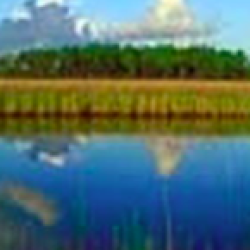Source Institutions
Source Institutions
Add to list Go to activity
Activity link broken? See if it's at the internet archive

In this activity, learners make a model of a pollution spill that occurred at Bangs Lake in Mississippi and measure water quality parameters in their model. Learners then study the actual spill, analyzing various forms of data to determine the date of the spill and identify how the spill changed water quality parameters in the estuary during and after the spill. Learners speculate on how various life forms in the estuary were affected. Finally, learners produce a timeline of the spill event, with recommendations to the state Department of Environmental Quality about how to prevent large-scale pollution spills like this in the future.
- 45 to 60 minutes
- 2 to 4 hours
- Over $20 per group of students
- Ages 14 - 18
- Activity, Experiment/Lab Activity, Lesson/Lesson Plan, Model
- English
Quick Guide
Materials List (per group of students)
- Copies of reading--A Terrible Spill in Grand Bay (page 12 of PDF)
- Copies of worksheet--A Terrible Spill in Grand Bay (page 14 of PDF)
- Copies of data sheet--Data on Conditions in Grand Bay (page 23 of PDF)
- Terrible Spill Grand Bay powerpoint
- Plastic shoeboxes or similar container(s)
- Clay, soil, cardboard, etc. for preparing estuary models
- Brackish water (salinity at about 8 ppt)--1-2 liters per group (prepare using salt, seawater or Instant Ocean)
- Beakers or other containers for chemicals
- Graduated cylinders
- Citric acid
- Gypsum--plaster of Paris OR sheet rock ground up into powder (with a mortar and pestle)
- pH papers (preferably from 2-14)
- Water test kits or probes for measuring water quality parameters
- Safety glasses
- Protective gloves
- Plastic bags for disposing of the simulated wastewater and any other gypsum, as gypsum may clog the sink
- Poster board for final assessment project
Subjects
-
Earth and Space Science
-
Earth Processes
- Geochemical Cycles
-
Earth Structure
- Oceans and Water
- Biosphere
-
Earth Processes
-
Life Sciences
- Cells
-
Diversity of Life
- Plants
- Animals
-
Ecology
- Ecosystems
- Energy Flow and Chemical Cycles
- Human Impact
-
Physical Sciences
-
Chemistry
- Chemical Reactions
-
Chemistry
-
Mathematics
-
Data Analysis and Probability
- Data Analysis
-
Data Analysis and Probability
-
The Nature of Science
-
Science and Society
- Risks and Benefits
- Public Policy
-
The Scientific Process
- Conducting Investigations
- Gathering Data
- Formulating Explanations
- Communicating Results
-
Science and Society
-
The Nature of Technology
-
Technology and Society
- Technology and the Environment
-
Technology and Society
Informal Categories
- Animals
- Model Building
- Nature and Environment
Audience
To use this activity, learners need to:
- see
- read
- touch
Learning styles supported:
- Involves teamwork and communication skills
- Uses STEM to solve real-world problems
- Involves hands-on or lab activities
Other
Includes alignment to state and/or national standards:
Includes assesments for student learning:
This resource is part of:
Access Rights:
- Free access
By:
Rights:
- All rights reserved, NOAA/National Estuarine Research Reserve System (NERRS),
